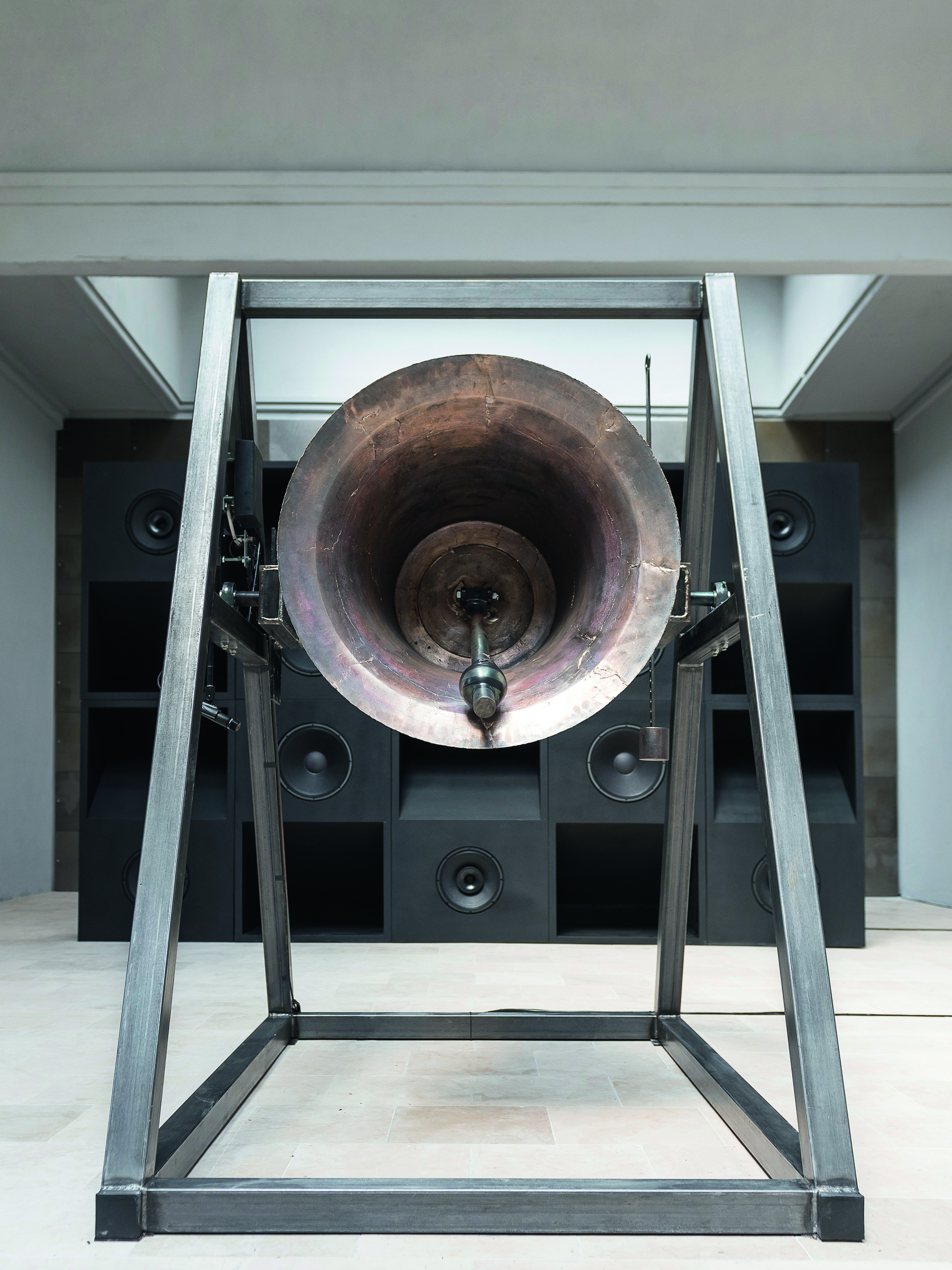Wystawa czasowa
25.10.2025 - 25.01.2026
Poziom 0
Konrad Smoleński: Everything Was Forever, Until It Was No More
Everything Was Forever, Until It Was No More returns 12 years after its premiere. The passing of time has left its mark not only on culture and social reality, but also on their participants. Konrad Smoleński’s monumental installation has responded to this change in a subtle yet significant way. The removal of the clapper of the bells changes the tone of the work; it has seemingly become detached from the present day. The machine no longer sounds the alarm, making it more sensitive to its surroundings.
The project was created in 2013 for an exhibition at the Polish Pavilion at the 55th Venice Biennale. It was then presented at the Centre Pasquart in Biel/Bienne and at the Zachęta Gallery in Warsaw. Each time Smoleński’s installation was recreated, a new version was proposed, corresponding to the site-specific conditions. An important element of Everything Was Forever... were also musical performances with invited artists – in duet with the installation.
The oft-repeated catchphrase of the project was ‘what you see is what you get’. The lack of anecdote and the raw structure of the work, based on the materiality and programmed function of each of its elements – bells, microphones, loudspeakers and bass shakers, as well as the auditorium for the audience in Biel/Bienne and Warsaw – were key features for us. The size of the individual modules of the work – as in the presentation at MOCAK – creates the environment for experiencing the Everything Was Forever... cycle. The first movement belongs to two bells placed on both sides of the long gallery, custom-made according to Smoleński’s design in the Kruszewski brothers’ bell foundry. The actuator that sets the bells in slow motion initiates the first part of the composition. Microphones transmit the sound from the gallery – both all intentional and accidental noises – to be processed according to a strictly defined procedure. The effect of these procedures returns to the space and is emitted by monumental loudspeakers, and in the last part also by shakers. The cycle ends and begins again at specific intervals, and the silence that accompanies the wait for the next setting of the process in motion is an integral part of the project – on an equal footing with the sound filling the gallery.
Visually Everything Was Forever… is subordinate to symmetry and the austere shapes of the speakers and the auditorium. The black columns facing the audience, made of birch plywood, highlight the contrast between what is active and what is passive; between the sender and the receiver; between amplification and reduction.
And yet this division is disrupted at its very source. Through their physical presence in the gallery, the audience of Everything Was Forever... becomes part of the resonance of the installation. Both individually and collectively, the spectators act as a resonator: the human body – like the body of a bell – is both a source of sound recorded by microphones and an air resonator that amplifies the reception of individual tones.
Smoleński, who works at the intersection of the music scene and the visual arts, has not attempted a historical reconstruction of a work from a decade ago. The new version of Everything Was Forever... opens up space for the hitherto untapped potential of the instrument. By abandoning the clappers of the bells, the artist has not only changed the sound and physical presence of the work, but above all, he has made room for the experience of participation. The narrative asceticism that recurs in his practice becomes a response to the excesses of the present day. Faced with a deficit of attention – visible in both the micro and macro dimensions – Smoleński chooses fragmentation, but also community. The artist’s language is closer to literary arabesque, in which the emphasis shifts to the background and atmosphere. Worn out by existing in the shadow of incessant threats, attention seeks another form of engagement with the world – a form that is more focused and free from violence. This is made possible by the gesture of eliminating the attack from the instrument.









